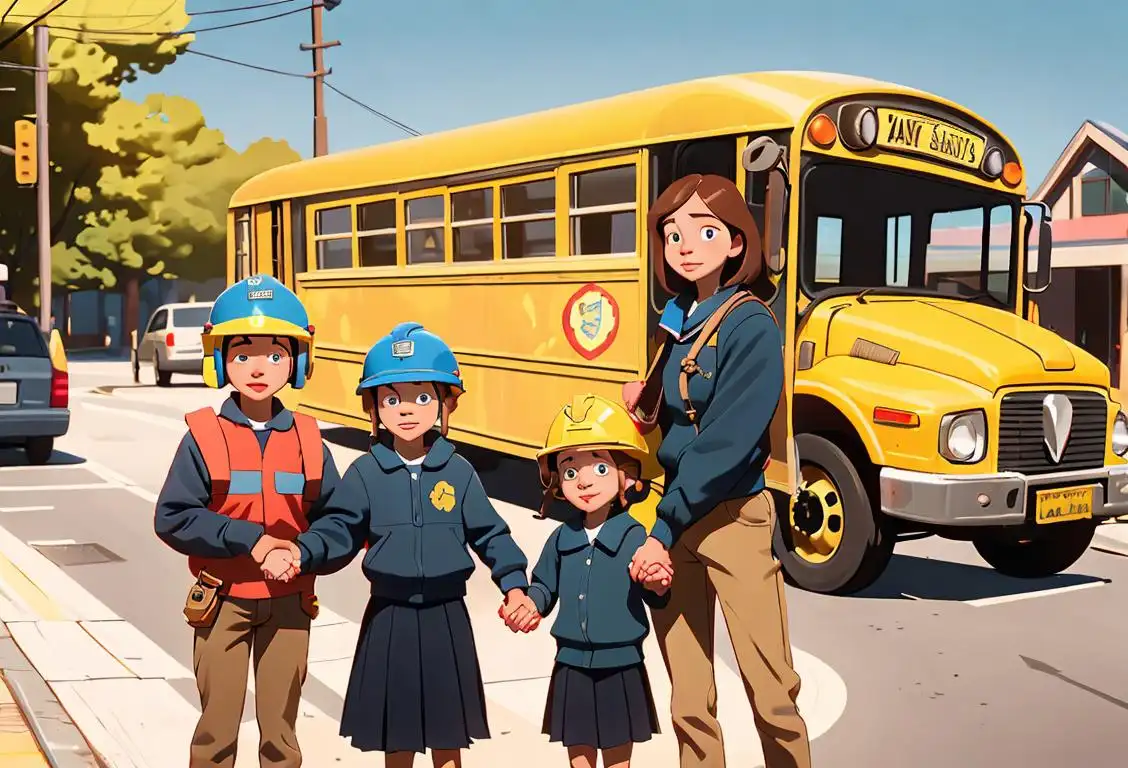National Saftey Day

Hey there, safety enthusiasts! It's time to buckle up and put on your helmets because National Safety Day is here to remind us all about the importance of staying safe and sound. Whether it's at home, on the road, or even online, this special day encourages us to take a moment and think about ways we can protect ourselves and our loved ones.
When is Saftey Day?
It's national saftey day on the 4th March.
Going back to the beginning
Did you know National Safety Day was first celebrated on March 4, 1972? That's right! It all started as a way to raise awareness about workplace safety. Since then, this observance has grown to cover a wide range of safety topics, from fire prevention to internet safety.
Staying safe at home
Home sweet home should also be home safe home! This National Safety Day, let's take a closer look at some tips for making our living spaces as safe as can be. Remember to check your smoke alarms, secure any loose cables, and keep hazardous substances out of reach of children or your naughty pets.
On the road to safety
Whether you're a seasoned driver, a cyclist, or a pedestrian, safety should always be your sidekick. Buckle up, obey traffic rules, and make sure your vehicle is in good working condition. And hey, don't forget to wear that helmet when you hop on your bike or skateboard. Safety is cool, my friend!
Surfing the web without wiping out
Our lives have become increasingly digital, and it's important to stay safe in the virtual world too. On National Safety Day, take the time to review your online privacy settings, use strong and unique passwords, and beware of phishing scams. Let's surf the internet with confidence and avoid falling into those online traps!
History behind the term 'Saftey'
13th century
Origin of the term 'safety'
The term 'safety' originated in the 13th century and can be traced back to the Old French word 'sauf,' which means 'safe' or 'uninjured.' At the time, it primarily referred to being protected from physical harm or danger.
16th century
Evolution into a broader concept
During the 16th century, the term 'safety' underwent an evolution, expanding its meaning beyond physical safety. It started to incorporate the idea of security, well-being, and protection from various risks and threats. This broadened understanding of 'safety' aligned with the changing societal contexts and concerns of the time.
19th century
Safety in industrial revolution
The 19th century marked a crucial turning point for 'safety,' especially in the context of the industrial revolution. As industrialization progressed, safety measures became increasingly important due to the rise of hazardous working conditions. 'Safety' became a central concept in labor movements and advocacy for improved workplace conditions.
20th century
Safety as a science
In the 20th century, safety started to be recognized as a scientific discipline dedicated to preventing accidents, injuries, and minimizing risks. The emergence of safety engineering and safety management systems revolutionized various industries. Organizations like the National Safety Council (NSC) were founded, focusing on educating and promoting safety practices.
21st century
Safety in the digital age
As we entered the 21st century, safety expanded its reach to encompass the digital realm. With the rapid advancements in technology and the rise of cyber threats, the concept of safety extended to include data security, online privacy, and safeguarding against cybercrimes. The term 'cybersecurity' emerged as a subset of safety, highlighting the need for protecting individuals and organizations in the digital age.
Did you know?
Did you know that wearing a seatbelt reduces the risk of fatal injury by about 45%? So buckle up and stay safe on the roads!Tagged
romance awareness fun loved onesFirst identified
4th March 2021Most mentioned on
4th March 2021Total mentions
18Other days
Boyf Day
Kissing Fried Chicken Day
Suicide Prevention Month Day
Love Your Red Hair Day
Compliment Day
Kiss A Ginger Day
Happiness Day
Iloveyou Day
Do Something Nice Day
Opposite Day









